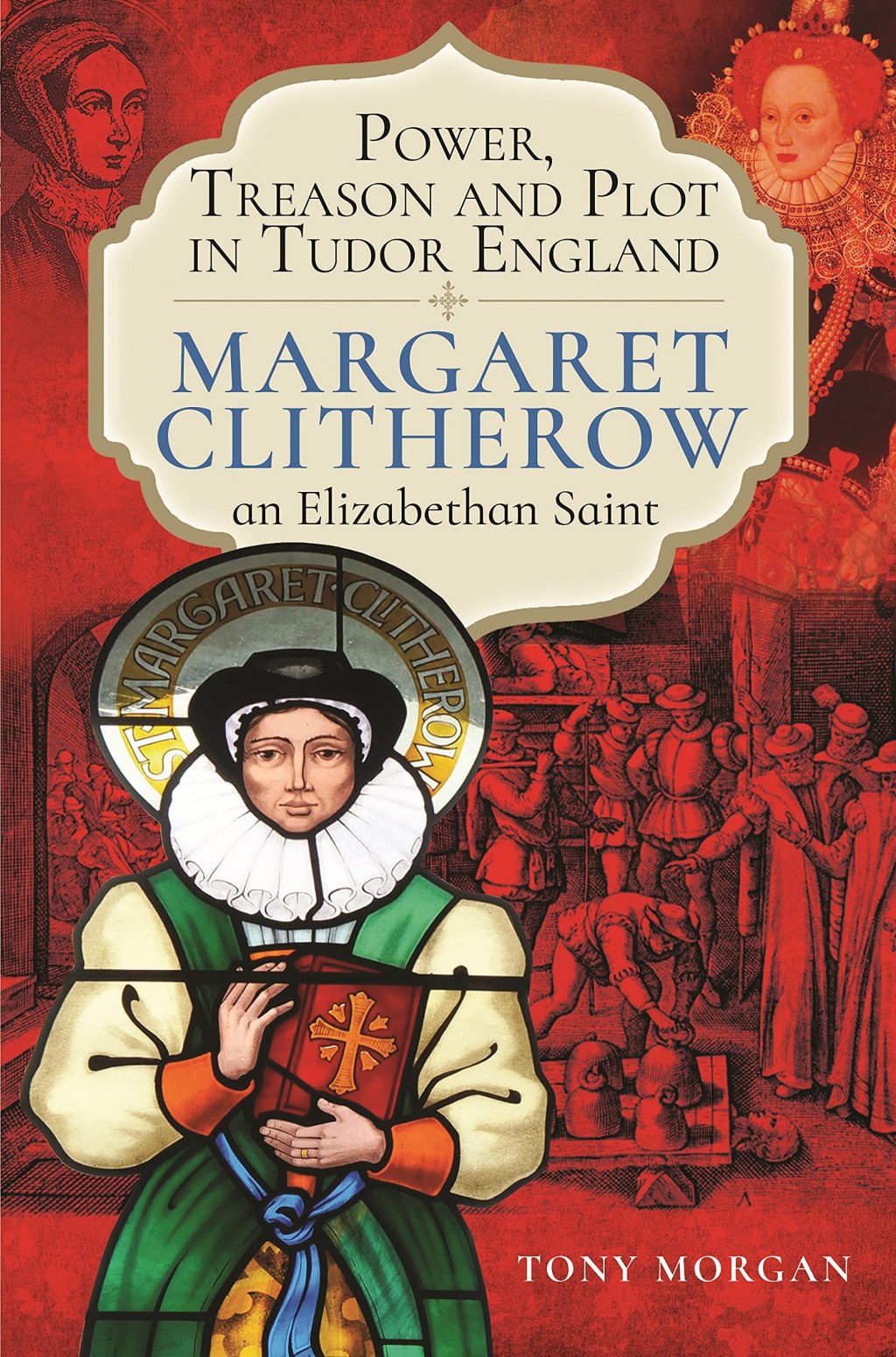Before reading this book, I actually have no idea who’s she or what’s the book aiming to tell or discuss. But when I dive into this book I got surprised and learned new things about an Elizabethan Saint, Margaret Clitherow.
Margaret Clitherow was an English saint or a martyr of Roman Catholic Church and she known as The Pearl of York. She was pressed to death for refusing to enter a plea to the charge of harbouring Catholic priests. She was canonised in 1970 by Pope Paul VI.
We are reminded in the book that that there is no contemporary record of the trial, but that one of the priests Margaret harboured , Father John Mush wrote an account of Margaret’s life and death A True Report of the Life and Martyrdom of Mrs Margaret Clitherow. The author, Tony Morgan also points out us that this is not an objective source.
The book highlights that the Jesuits, a criminal offense during Elizabeth’s reign, were only part of a series of sanctions against British Catholics. Only the Protestant Anglican Church was accepted. Those who refused to attend Anglican worship, known as Recusant, risked fines unless they could justify their absence. It has been shown that these penalties can lead to very horrific amounts or even imprisonment for repeated offenses.
The author summarises all the stages of the English Reformation and the impact it had on Elizabethan legislation. He also recounts how York status as the second city of England in the 15th century began to fail, how both population and economic activity declined. York is shown as being slow to accept the different stages of the Reformation, taking the side of the Catholic rebels during the Pilgrimage of Grace (1536). There were no Protestant martyrs during Bloody Mary’s reign. However the inhabitants of York stayed out of the Northern Earls Rebellion against Elizabeth in 1569.
Margaret might have been born in 1553. Her father owned property and in her will stated that Margaret could inherit an inn in Davygate, York. Margaret’s father died while she was a teenager, and her mother quickly remarried and took over the business with her second husband, Henry Maye, a Protestant from Hampshire who had relocated to York. Margaret married a butcher named John Clitherow when she was 18 years old and converted to Catholicism, but John remained a church warden in an Anglican church until the 1570s. Margaret was fined and subsequently imprisoned several times for refusing to attend Anglican services, and John, a well-known Protestant in the area, was also penalized by the courts.
The author does not shy away from the complexity of Margaret’s character, which is one of the book’s virtues. Particularly when, ostensibly without John’s approval, she exploited her connections to transfer their 12-year-old son Henry to a Jesuit institution overseas, knowing full well that if Henry ever returned to England, he would be executed as a traitor. Margaret also indicated that she wanted for the same penalty for her children when she was condemned. Margaret’s unwillingness to plead meant that many of her family members and other acquaintances could not be persuaded to testify against her and risk being implicated.
There is a particularly interesting examination of the role of women amongst the ‘recusants’ . Suggesting that there was quite possibly a Catholic network amongst midwifes. Also that female recusants in prison, free from childcare and their other labours, used the time for religious devotions, leaving custody strengthened in their convictions.
The author also investigates hypotheses such as Margaret’s pregnancy at the time of her trial. Margaret’s stepfather Henry Maye, who had remarried after Margaret’s mother died and was now Lord Mayor of York, was also involved in her detention. If the Courts took her assets and auctioned them in lieu of outstanding penalties, she may be expecting to buy mentioned inn at Davygate.
Overall, the author presents the various stages of the English Reformation in a straightforward and concise manner, demonstrating how they influenced York. Margaret Clitherow’s life is fairly depicted by him, yet she is seen as really dedicated, bold, and not wholly beyond reproach.
